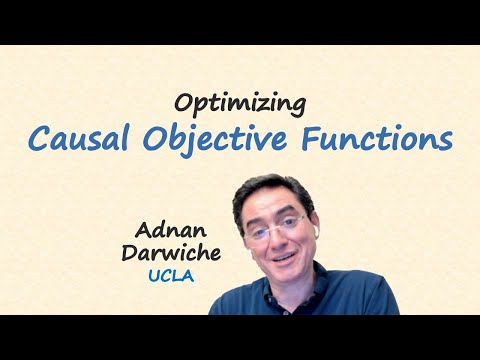Description:
Explore the intricacies of causal objective functions in this comprehensive keynote lecture delivered by Adnan Darwiche of UCLA at the 2023 workshop on causal discovery in Cholula, Mexico. Delve into the syntax and semantics of causal objective functions, also known as causal loss functions, and learn about an exact algorithm for optimizing a broad class of these functions. Examine the relationship between optimizing causal objective functions and the "unit selection" problem introduced by Li & Pearl, while focusing on the algorithmic approach that assumes a fully specified causal model. Cover key topics such as structural causal models, the causal hierarchy, and the identifiability/learning dimension. Gain insights into variable elimination for computing associational queries, the optimization of causal objective functions using Reverse-MAP, and the complexity of these algorithms. Conclude with discussions on elimination orders, treewidth of parallel worlds, and causal treewidth, providing a thorough understanding of this advanced topic in causal inference.
Read more

Optimizing Causal Objective Functions - Algorithms and Complexity
Add to list
#Mathematics
#Statistics & Probability
#Causal Inference
#Computer Science
#Algorithms
#Algorithmic Complexity